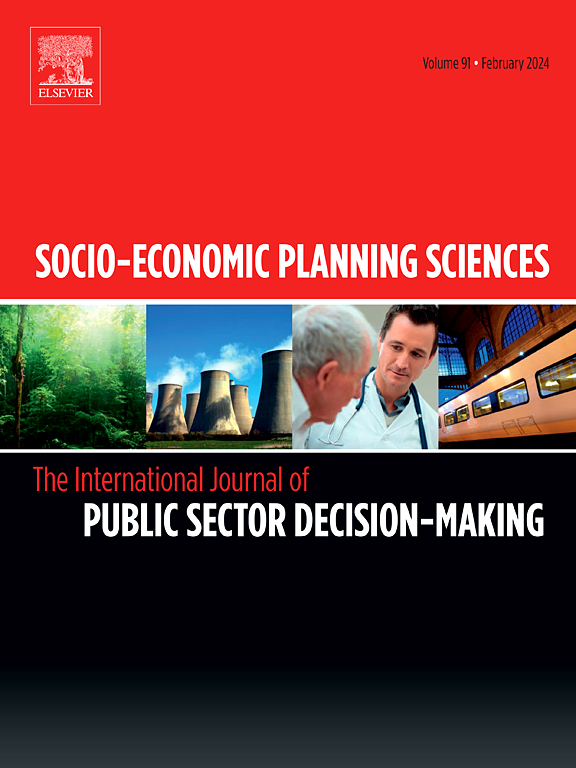考虑排队时间约束的测试设施选址:以巴西首都城市为例
IF 5.4
2区 经济学
Q1 ECONOMICS
引用次数: 0
摘要
研究了具有约束排队时间的测试设备选址问题。该优化问题旨在确定传染病测试设施的最佳部署地点和每个设施中的测试人员数量,同时在给定的概率下限制队列中的最大等待时间。建立了一个整数规划模型,并将其应用于巴西27个首都城市。此外,使用蒙特卡罗模拟验证了模型所获得的结果,以验证是否满足约束的队列时间。通过多次实验,可以确定各种场景的测试计划,包括不同的参数。在评估其异同时,这为决策者提供了有趣的见解。结果表明,该模型成功地生成了有价值的信息,以支持测试计划的创建,因为每个结果在所有执行中都尊重队列中受限的最大等待时间。除了指出在所有首府城市执行测试计划所需的最低投资外,他们还表明,总成本的小幅增加(不到4%)可以减少等待时间并提高服务水平,从而使决策者能够根据当前情况应用最佳参数组合。本文章由计算机程序翻译,如有差异,请以英文原文为准。
Testing facility location with constrained queue time problem: A case study on Brazilian capital cities
This paper addresses the Testing Facility Location with Constrained Queue Time Problem. This optimization problem was designed to determine the best places to deploy testing facilities for contagious diseases and the number of testers in each facility, while constraining the maximum waiting time in the queue, with a given probability. An integer programming model was formulated, presented and applied to the 27 capital cities of Brazil. In addition, the results achieved by the model were validated using a Monte Carlo simulation, to verify if the constrained queue time was being satisfied. Through several experiments, testing plans can be determined for various scenarios, comprising different parameters. When evaluating its similarities and differences, this provides interesting insights to the decision-maker. The results indicate that the model successfully produces valuable information to support the creation of testing plans, as every outcome respected the constrained maximum waiting time in the queue in all executions. In addition to pointing out the minimum investment necessary to execute a testing plan in all the capital cities, they also show that a small increase (less than 4%) in the total costs could allow both a decrease in waiting time and an increase in service level, allowing the decision-maker to apply the best combination of parameters, based on the current situation.
求助全文
通过发布文献求助,成功后即可免费获取论文全文。
去求助
来源期刊

Socio-economic Planning Sciences
OPERATIONS RESEARCH & MANAGEMENT SCIENCE-
CiteScore
9.40
自引率
13.10%
发文量
294
审稿时长
58 days
期刊介绍:
Studies directed toward the more effective utilization of existing resources, e.g. mathematical programming models of health care delivery systems with relevance to more effective program design; systems analysis of fire outbreaks and its relevance to the location of fire stations; statistical analysis of the efficiency of a developing country economy or industry.
Studies relating to the interaction of various segments of society and technology, e.g. the effects of government health policies on the utilization and design of hospital facilities; the relationship between housing density and the demands on public transportation or other service facilities: patterns and implications of urban development and air or water pollution.
Studies devoted to the anticipations of and response to future needs for social, health and other human services, e.g. the relationship between industrial growth and the development of educational resources in affected areas; investigation of future demands for material and child health resources in a developing country; design of effective recycling in an urban setting.
 求助内容:
求助内容: 应助结果提醒方式:
应助结果提醒方式:


